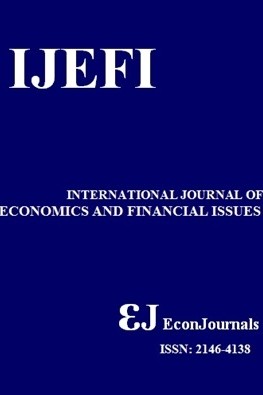Mediating Effects of Cash Management in Relationship Between Capital Structure and Liquidity in Small and Medium Enterprises
Mediating Effects of Cash Management in Relationship Between Capital Structure and Liquidity in Small and Medium Enterprises
Capital Structure Cash Management, Liquidity, Mediation,
- Başlangıç: 2011
- Yayıncı: İlhan ÖZTÜRK
Kamal NASER, Abdullah Al- MUTAİRİ, Ahmad Al KANDARİ, Rana NUSEİBEH
Methodological Tools for Risk Assessment in Industrial Enterprises
Lev İ. USHVİTSKİİ, Tat’yana A. KULAGOVSKAYA, Anna A. TER-GRİGOR’YANTS, İrina V. SOLOVYOVA, Elena S. MEZENTSEVA
Human Capital-Economic Growth Nexus in Africa: Heteregeneous Panel Causality Approach
Emmanuel ANORUO, Uchenna ELİKE
The Relationship between Inflation and its Uncertainty: Evidence from Jordan
Liudmila İvanovna VOTİNTSEVA, Dzhamilya Alimovna SOZAEVA, Marina Yurievna ANDREEVA
Sakshi KHANNA, Amit SRİVASTAVA, Yajulu MEDURY
Organizational Model of Regional Socio-Economic Territorial Management
Tatiana Y. ANOPCHENKO, İrina A. PRYADKO, Kometa T. PAYTAEVA, Oksana S. DUBSKAYA, Anton D. MURZİN
Is “Harmonious Development” Valid for European Union Regions?
Internal Finance and Growth: Comparison Between Firms in Indonesia and Bangladesh
Financial Development, Financial Instability and Economic Growth: The Case of Maghreb Countries
